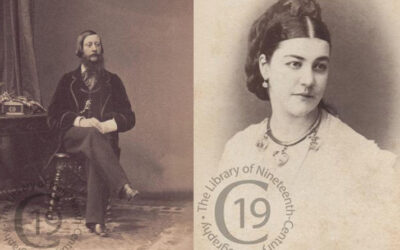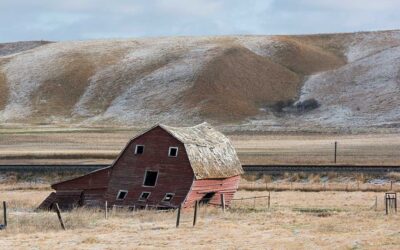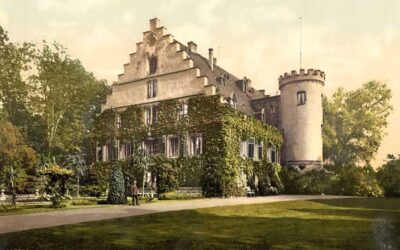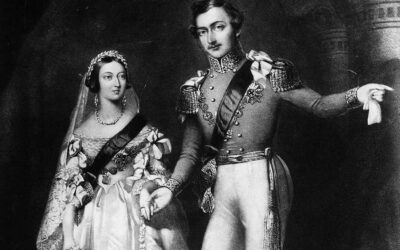Queen Victoria’s pet names, titles, nicknames & aliases
“During her 63 year reign Queen Victoria acquired a wealth of these. Many were complimentary and affectionate, some were ironic or satirical, and others were downright rude… ”
Countess of Balmoral/Countess of Lancaster
These thinly disguised aliases were used by the queen on incognito trips around Scotland with Albert, and later, when she travelled to the Continent during her widowhood. She had originally also used the name Countess of Kent on a trip to Switzerland in 1868 but dropped this because of her son Prince Alfred’s inheritance of the title earl of Kent.
These noms de plume of course did not pull the wool over anyone’s eyes – particularly abroad, when this supposed countess arrived with a massive entourage, mountains of luggage marked ‘VR’ (Victoria Regina) and with a kilted John Brown conspicuously in tow.
Drina
This was an abbreviation of the name Alexandrina – which had in fact been Victoria’s first given name at her christening in 1819, in honour of one of her godparents, Tsar Alexander I of Russia. Victoria never liked the name and it was shortened to ‘Drina’ in the family. After she ascended the throne she officially assumed her second name – Victoria – under which she was crowned queen. The public awareness of this pet name has been greatly enhanced by its use in the ITV series Victoria.
Duck
This was the affectionate nickname coined for his grandmother, by the German Emperor Wilhelm II. The son of the queen’s eldest daughter Vicky, Wilhelm was devoted to his grandmother, and present at her deathbed, yet went on to lead his country into a disastrous war against Britain in 1914 – during which he himself was popularly vilified in Britain as Kaiser Bill.
Eliza
A code name for the queen that appears to have been used among her ministers and in court circles. In his letters to the Duchess of Manchester during the 1850s and 1860s, the queen’s foreign minister Lord Clarendon frequently referred to the royal couple as ‘Eliza and Joseph’; for example in a letter of 1869 Clarendon wrote of the queen’s gradual recovery from bereavement: ‘Eliza is roaring well and can do everything she likes and nothing she doesn’t’. In later years, Sir Henry Ponsonby, who served as the Queen’s private secretary, also regularly referred, in private, to Victoria as Eliza.
Empress of India
This title was invested on New Year’s Day 1877, having been engineered for Victoria by her prime minister Benjamin Disraeli. The previous year he had managed to get the Royal Titles Bill passed by both houses of parliament, in the face of considerable opposition. The title was sought by Victoria, partly to put paid to endless petty arguments about precedence within the royal family. In particular, it gratified her consuming desire to be an Empress, of equivalent status, to her eldest daughter Vicky who was in line to become Empress of Prussia. In India the queen would be referred to in this respect as the Khaiser-i-Hind but despite her passionate interest in all things Indian, Victoria never visited the country.
The Faery
Benjamin Disraeli coined this ironic pet name for the Queen, as a romantic allusion back an earlier close relationship between a queen and a courtier. The name is a pun on the narrative poem The Faerie Queen written by Sir Edmund Spenser between 1590and 1596 in honour of his ‘Gloriania’ – Queen Elizabeth I. The writer Lytton Strachey noted the potential comedic element in a name that was very far from describing the queen’s then portly figure. It bore, he observed, ‘the suggestion of a diminutive creature, endowed with magical – and mythical – properties, and a portentousness almost ridiculously out of keeping with the rest of her make-up.’ And what is more, the name bore witness to Disraeli’s own deeper political ambitions: ‘The Faery, he determined, should henceforward wave her wand for him alone.’
The Famine Queen
Undoubtedly the most damning epithet, coined by Irish nationalist Maud Gonne in her condemnatory article of the Queen’s calling Irishmen to arms in the Boer War, despite decades of neglect by her of the Irish and Irish affairs.
In anticipation of the queen’s visit to Ireland in April 1900 Gonne published an article in French in her journal L’Irlande Libre that was translated with the title ‘The Famine Queen’ and published on 7 April 1900 in the United Irishman. As soon as officialdom got wind of the article, police raided the publisher’s offices and seized copies of the issue, but, unfortunately for Victoria, the name stuck, particularly with the Irish.
Gutes Fräuchen/ Gutes Weibchen
Meaning ‘good little wife’, these were the favourite German names of endearment used by Prince Albert to refer to Victoria in private. On his deathbed in December 1861, one of the few things he was able to say to the queen sitting by his bed, as he lapsed in and out of consciousness, were the words, ‘Gutes Fräuchen’, ‘Liebes Fräuchen’ or ‘Gutes Weibchen’. The queen responded in German too, in these final tender moments: before Albert fell into a delirium, she leant over him and whispered ‘Es ist kleines Fräuchen’ (This is your little wife).
Gangan
Gangan is how the queen was affectionately known among her vast brood of grandchildren, notably her great grandsons Edward VIII and George VI.
Guelph D’Este of the House of Brunswick
According to the queen’s lady-in-waiting Marie Mallet, this is the surname that the queen, on being asked by a correspondent, said she had considered appropriate for herself rather than of the House of Hanover (Haus Hannover). This far more romantic-sounding Germanic dynasty, which can be traced back to ninth-century Bavaria, appealed to the Queen and Prince Albert’s passionate interest in their genealogy and their age-old noble blood lines. In 1692 the Hanoverian Guelphs (also Guelfs, Welfs) had become electors of the Holy Roman Empire; in 1714 George I had assumed the throne of Britain for the House of Hanover.
But Victoria always disliked her family association with the profligate Hanoverians, of which house she was the last crowned monarch in Britain. She opted privately to identify herself instead with her more remote descent from the ancient house of Guelph.
Little Vic/Queen Vic/ Queen Victory/Her Little Majesty
These were all popular nicknames in circulation at the time of the queen’s accession in June 1837, coined and used mainly by literary circles and court gossips. The names, which in their various forms emphasised the Queen’s youth and small stature appear particularly in the early days of her reign, in the correspondence c. 1837–41 of e.g. Thomas Carlyle, Jane Welsh Carlyle, Elizabeth Barrett Browning, Thomas Creevey and Charles Kingsley – to name but a few.
Little Victory
Thomas Carlyle in particular persisted in referring to the Queen in such infantilising tones into the 1870s, particularly as Little Victory but also as Poor Little Victory or the little Queen Victory or even the poor little lassie.
Mai Blume / May Blossom
This was the pet name for young Victoria coined by her German grandmother, Augusta Duchess of Saxe-Coburg-Saalfeld. It was also used during Victoria’s childhood by her mother the Duchess of Kent. It was of course perfectly chosen, for Victoria was born 24 May just as the may blossom was in bloom.

The Missus
Another nickname used by Lord Clarendon to refer to the queen (see also Eliza above).
Mother/Empress Mother
In dignified old age Queen Victoria was increasingly looked upon at the mother of the nation – especially after her Golden and Diamond Jubilees of 1887 and 1897 had restored her in the affection of her public. Such a term was not unfamiliar in other countries in reference to the monarch – most notably in Russia, where the tsar was traditionally referred to as the batushka-tsar the ‘little father’ of the nation. By the time Queen Victoria died in January 1901 ‘Mother’ had gone into widespread use, with some newspapers referring to her as the ‘Queen-Mother’ or ‘Mother-Queen’. Apparently, when the royal standard flew at full mast over Buckingham Palace, the policeman on duty outside the gates would tell inquirers that ‘Mother’s home’.
The epithet was most notably used by the writer Marie Corelli in her laudatory piece, ‘The Passing of the Great Queen’, one of the first to appear after the queen’s death in 1901. In it Corelli praised the queen for having ‘given a supreme example of what mothers should be – wise, prudent, patient, never weary in well doing, and for ever tender, for ever loving’ . ‘Strange it is to think of England’, she observed, ‘without the Mother-Queen of the great British people’.
Mrs Albert
Another epithet used in literary circles, particularly by the poet Elizabeth Barrett Browning.
Mrs Brown
Undoubtedly the most well-known nickname, thanks to the enormous success of the 1997 film of that name, starring Judi Dench and Billy Connolly as Queen Victoria and John Brown.
In the autumn of 1864, Brown, one of the gillies who had served the Queen and Prince Albert at Balmoral since the 1850s, was, at the suggestion of the queen’s doctors, brought down from Scotland, together with one of the queen’s favourite ponies, Flora, to encourage her to take exercise out of doors. Brown was soon in constant attendance– and often went out alone with Victoria for carriage drives.
With Brown quickly promoted by her to the status of an esquire and given the title ‘The Queen’s Highland Servant’, jealousy brewed at court and salacious rumours began to fly. The nickname began circulating in the press and at court in about 1866. Private gossip became public gossip after the publication by the queen of her Highland journals – Leaves from the Journal of Our Life in the Highlands – in 1868, in which she described on almost every page, and in the most effusive tones the devoted ministrations of John Brown.
The rumours about the queen’s relationship with Brown became ever more exaggerated and salacious in the gutter press and satirical magazines both at home and on the Continent, (as in the French cartoon above). There was talk that the queen had entered in to a secret marriage with Brown and that she had also had his child. At around this same time, members of the pre-Raphaelite school of painters in England, such as William Morris, also referred to the queen as The Empress Brown. Some of the royal children, privately, and with a sense of irony that displayed their underlying apprehensions, referred to Brown as ‘Mama’s lover’.
Mrs Fagin
This nickname was coined by the former Maharajah of the Punjab, Duleep Singh, alluding to the crook Fagin who commands a team of pickpockets in Charles Dickens’s Oliver Twist.
The jibe came about as a result of his seething resentment over the queen’s retention of the famous Koh-i-Noor Diamond, presented to the British under duress by him in 1849 and which many felt should be returned to India. ‘She’s really a receiver of stolen property, knowing it to be stolen,’ he exclaimed, ‘and has no more right to that diamond than I have to Windsor Castle’.
Mrs Melbourne
Another spiteful epithet prevalent at court during the first years of Queen Victoria’s reign, 1837-9, when she developed a close pupil–teacher relationship with her prime minister Lord Melbourne. The amount of time they spent together, to the exclusion often of Victoria’s own mother and other friends and advisors at court, aroused jealous accusations that the old roué Melbourne’s conduct towards the young and impressionable queen was inappropriate.
That Victoria’s behaviour towards Melbourne as an admiring teenager who hung on his every word, is all to apparent in her journal entries. There were insinuations of a sexual relationship between them, but in essence Victoria’s attitude amounted to hero-worship rather than romantic love and Melbourne’s was that of a doting surrogate father.
Queen of the United Kingdom of Great Britain and Ireland
Historians endlessly sigh to hear Queen Victoria so often inaccurately referred to as ‘Queen of England’ in film and TV dramas. She was of course Queen of four countries – England, Scotland, Wales and Ireland – from her accession in 1837, but screenwriters, understandably enough, find that too much of a mouthful. The title had been created from the incorporation of Wales with England in the 16th Century and the Act of Union joining Scotland in 1707.
The United Kingdom (England, Scotland, Wales and present day Northern Ireland) came into being under another Act of Union, in 1801, which formally united Great Britain with Ireland. After the Irish Civil War of 1920-1 and the establishment of the Irish Free State, only the Protestant north remained as part of the UK.
The Old Lady / The Good Old Lady
These allusions to Victoria emerged during the latter years of her reign, after Victoria had transcended a period of unpopularity as a result of her deep mourning for Prince Albert. They signified a final acceptance of the ageing Queen as a dignified and enduring symbol as head of the nation.
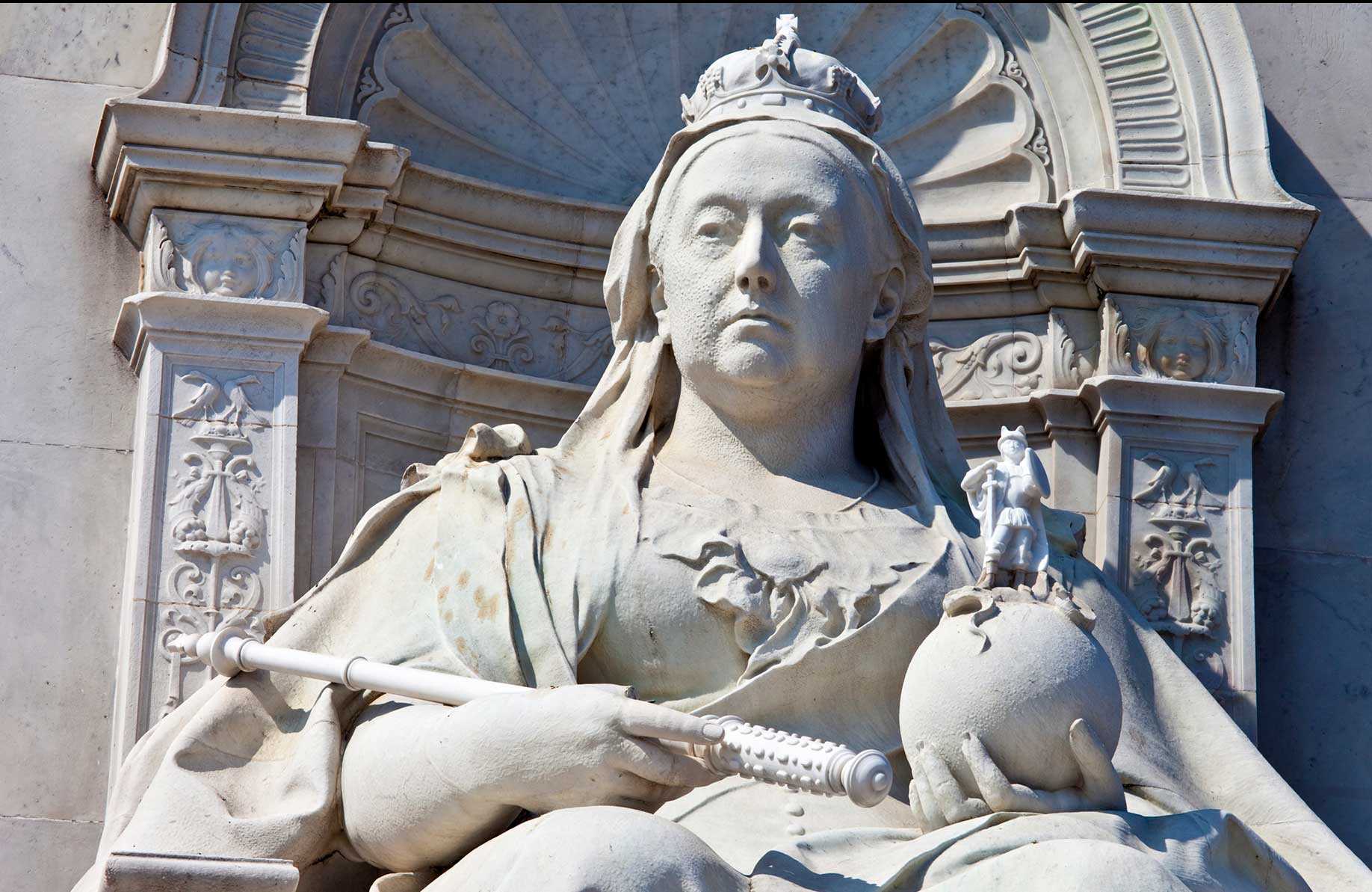
The Widow at Windsor
Undoubtedly the most widely misquoted nickname for the ageing Queen. The Widow at (not of ) Windsor was taken from the poem ‘The Sons of the Widow’ by Rudyard Kipling, that appeared in his collection, Barrack Room Ballads and Verses published in 1890:
‘Ave you ‘eard o’ the Widow at Windsor,
With a hairy gold crown on ‘er ‘ead?
She ‘as ships on the foam – she ‘as millions at ‘ome,
An’ she pays us poor beggars in red.
It is likely however that the nickname had been in circulation before Kipling used it; it certainly appears as ‘the widow in Windsor’ in the Irish press a few years earlier. The tone reflects public disgruntlement at the queen’s retreat from public view after the death of Albert in 1861 and her dogged refusal to emerge for all but the most rare state occasions, until well into the 1870s. The public resentment this aroused led to a strong revival of republicanism at that time and a dropping off of sympathy for the queen in her self-indulgent and protracted state of widowhood.
The Woman in Black
Another tag for Victoria that was prevalent in the later years of her reign. The society hostess Mrs Gertrude Tennant noted in a conversation she had had in 1871 with the queen’s close friend, the former Empress Eugenie of France, that ‘The Queen is becoming very unpopular. They now call her ‘The Woman in Black’
Vickelchen
The German diminutive form of Victoria – ‘little Vicky’ – which was used by the queen’s German mother the Duchess of Kent and grandmother, Augusta Duchess of Saxe-Coburg-Saalfeld when Princess Victoria was a baby (the duchess knowing very little English when she first arrived in Britain for Victoria’s birth in 1819).
Victoria Regina
The Latin version of the queen’s official title; after she became Empress of India in 1877 the title became Victoria Regina et Imperatrix – ‘Victoria Queen and Empress’.
Wumman
This irreverent Scottish epithet became the most frequently heard form of exhortation with which John Brown addressed the queen, particularly when he became impatient with her, or when she did not cover herself up sufficiently against the cold when out driving. On one such occasion he was heard to shout at Victoria, as he struggled to pin a plaid around her shoulders: ‘Hoots, wumman, canna ye hold yer head still!’.
The Queen’s household were horrified by such disrespect and coarseness, but the queen, ever a lover of homespun Scottish candour, rather enjoyed the attribution. Her lady-in-waiting Augusta Stanley testifies in her letters from Scotland that the local poor cottagers who were often the beneficiaries of gifts of tea and sugar from the queen, would often refer to her as being ‘a rale fine wummun’.
Your unhappy mama
Victoria used these words to describe herself when signing off letters to her children for at least the first three years of her widowhood.
Latest Articles and Media about Victoria & Albert
Mad Lord Adolphus, Lady Susan and Bertie’s Baby
Even Queen Victoria, who privately loved tittle-tattle but never admitted to it, could not resist being drawn into the saga of mad Lord Adolphus Vane-Tempest and his poor wife Susan…
The Curious Tale of Queen Victoria’s dresser
From Windsor Castle to North Dakota – a fascinating tale of pioneer spirit and triumph over adversity by English immigrants.
Prince Albert’s Birth: Is there any truth in the rumours of illegitimacy?
Books in English often do not have very much to say about Albert’s mother, Princess Luise of Saxe-Gotha-Altenburg. Did her husband’s womanising push her into the arms of another man?
Charlotte von Siebold – the Pioneering German Midwife who delivered Queen Victoria
At the time of the future Queen Victoria’s birth, ‘the excellent Mademoiselle Siebold’ emerged from the delivery room to announce the birth of a girl to the gathered dignitaries with considerable delight, adding in her thick German accent: ‘Verr nice beebee. No big but full. You know, leetle bone, mush fat.’
The Victorian Christmas
The cosy Dickensian Christmas referred to in Queen Victoria’s diary for Christmas Eve 1860, was in great part popularized by Victoria and Albert after their marriage in 1840. During the 21 years that followed they did much to set their own particular stamp on how the festival is celebrated in this country.
Back Home in Dickensland
As children we were fearless. Mean, and muddy, and at times dispiriting it may have been, but the Medway Estuary was our paradise. My own daydreams draw me there still…
Sarah Forbes Bonetta: the Captive African Princess Gifted to Queen Victoria
In its Christmas Special for December 2017 the ITV series Victoria featured the story of Sarah Forbes Bonetta, a captive African princess who was brought to the court of Queen Victoria. She has frequently been described as the Queen’s goddaughter’ but this is not in fact true…
Queen Victoria’s dress sense – or lack of it
Queen Victoria’s dress sense – or rather, lack of it – was a subject that regularly provoked the despair of her courtiers. Despite his best efforts, the court painter, Franz Winterhalter, who painted some of the most fashionable women in Europe, could not disguise Victoria’s slightly provincial air…
Queen Victoria’s Passion for Photography
The 63-year reign of Queen Victoria brought with it much invention and innovation, but nothing has probably been more significant in defining the mental picture we all of have of her and Victorian everyday life than the photograph.
